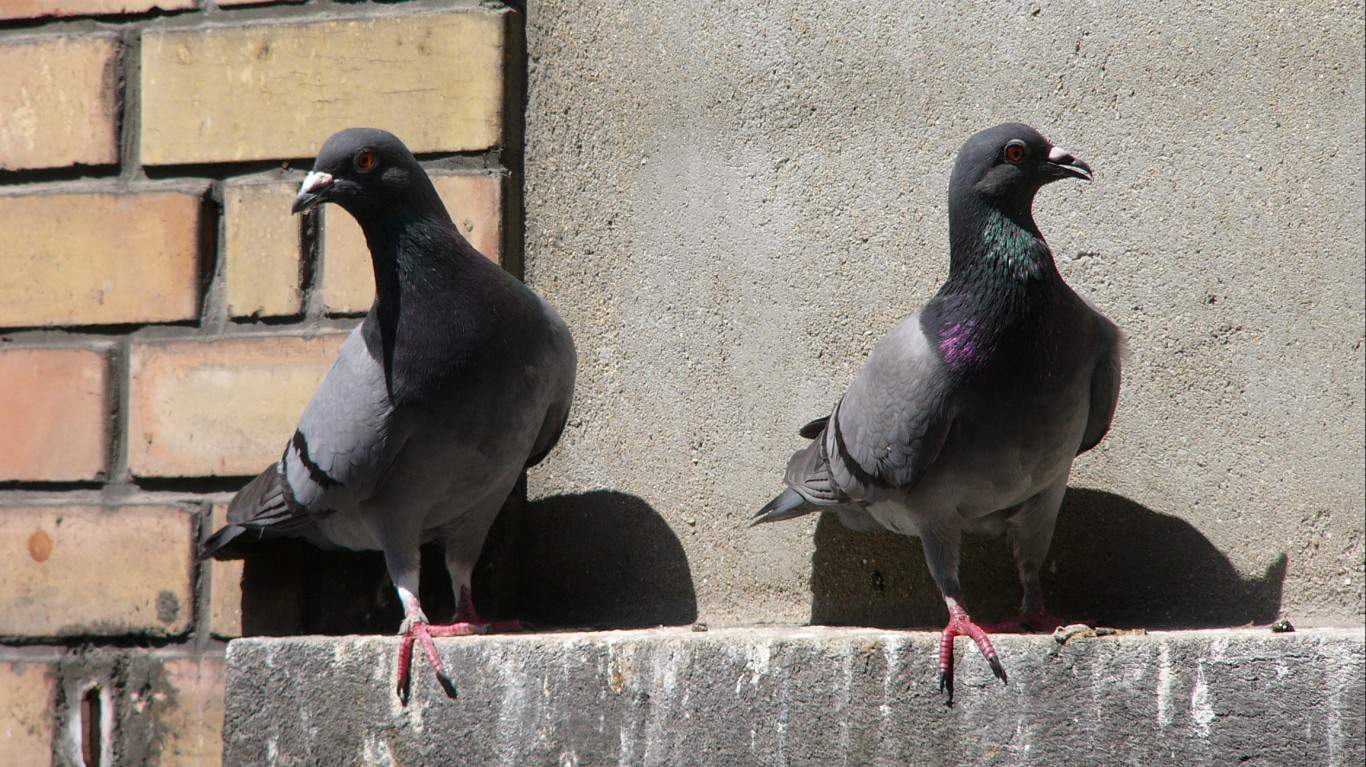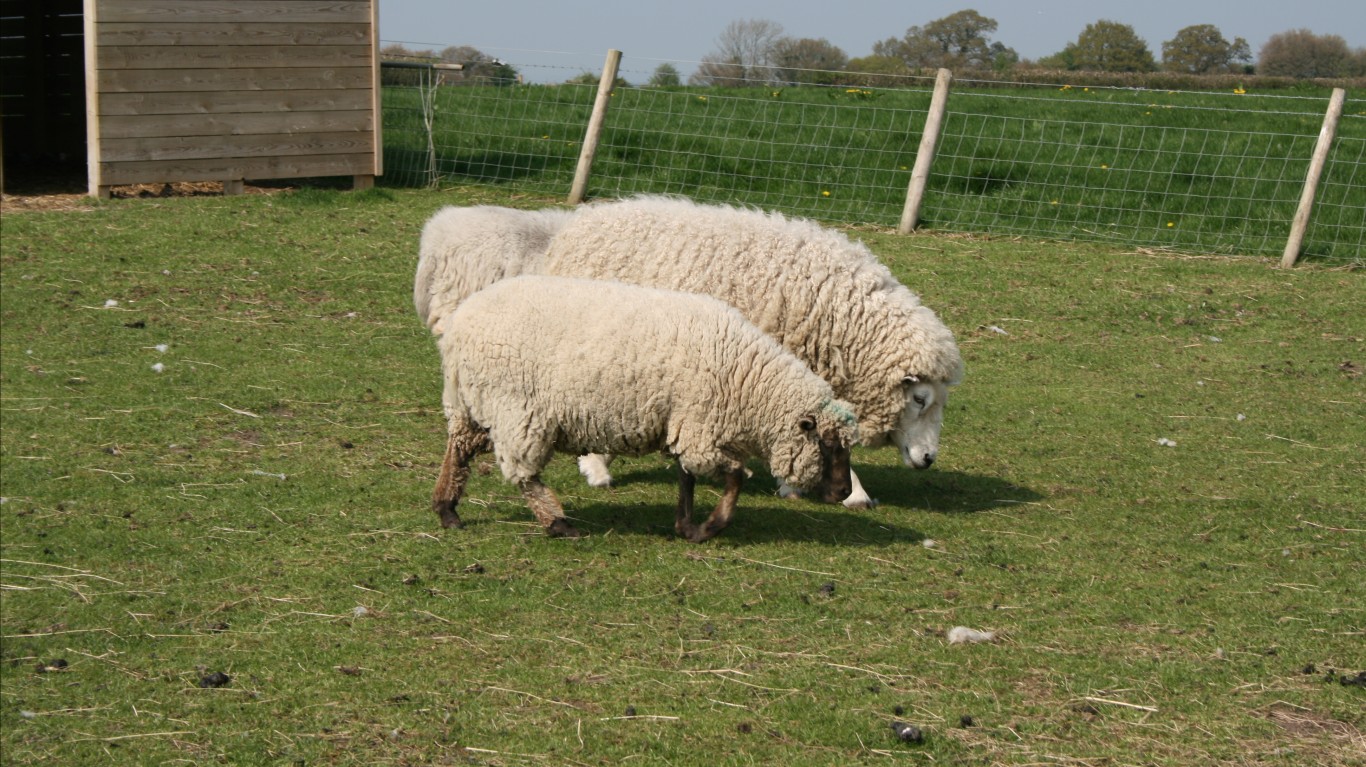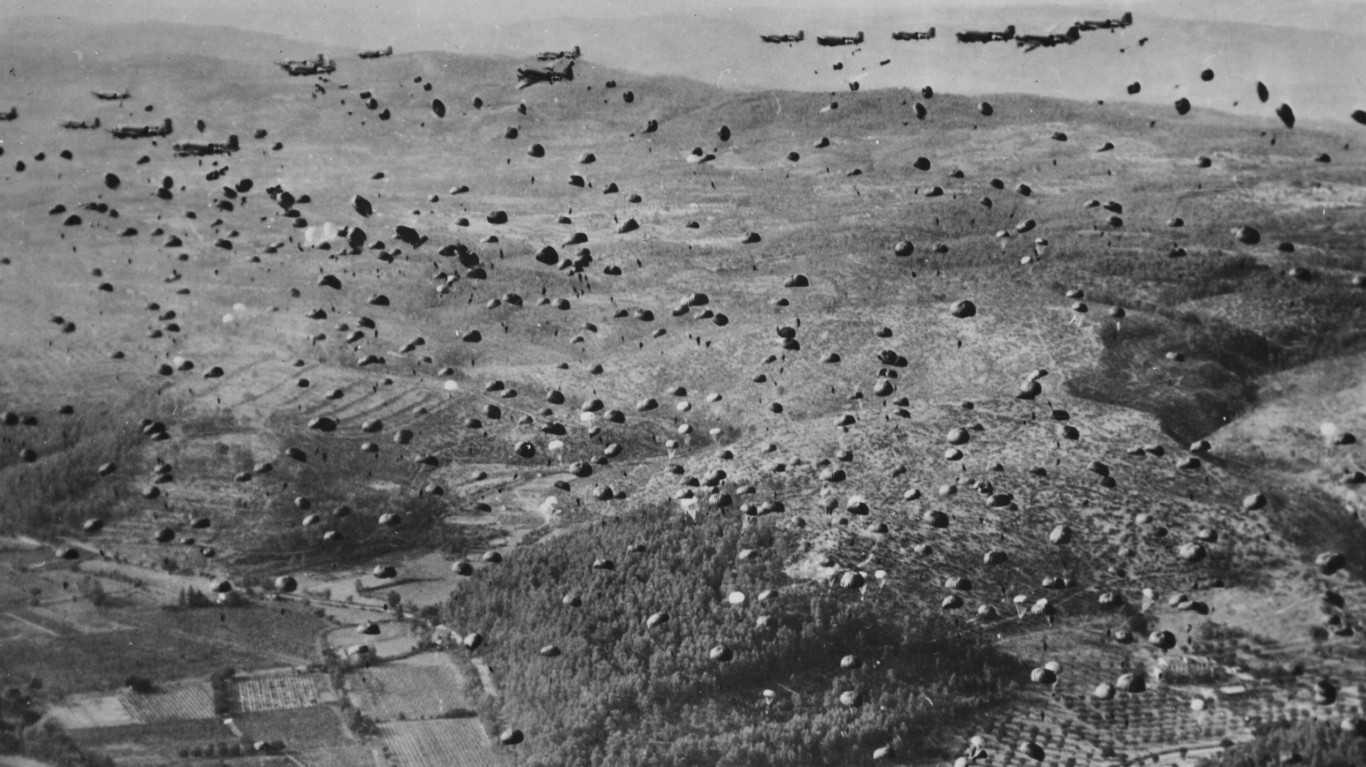
The moment humans learned to domesticate, train, and use animals, we started using them to kill each other. From horse-drawn chariots, nimble horse archers, and flaming pigs, to messenger pigeons and elephants. The most impressive use of animals in wartime, of course, involves throwing them from the back of an airplane. Casual fans of military history will know of some of the more popular examples of parachuting animals, but do you know what others were sent into battle from the sky? Here is a list of the seven animals that were parachuted into battle.
Background on Parachuting Animals
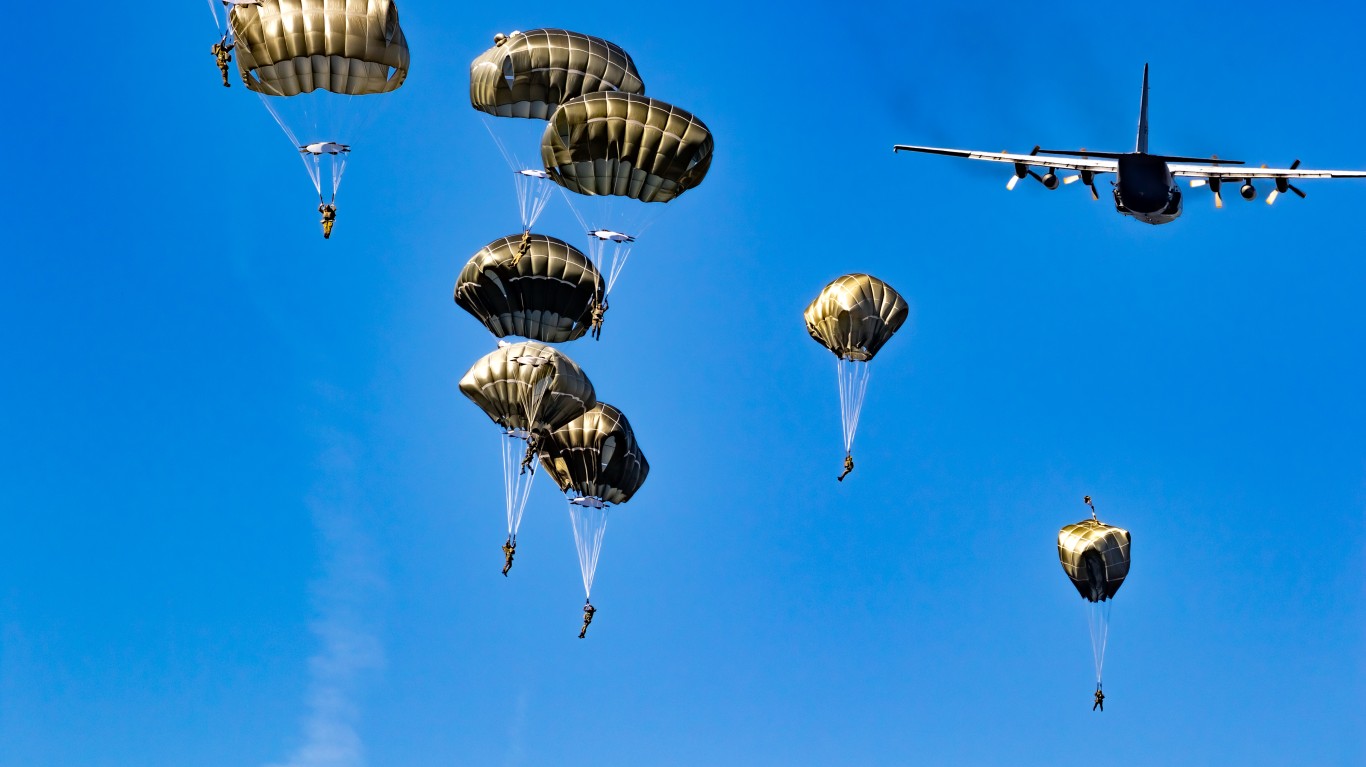
The main strategic advantage of parachuting into battle is that you can engage the enemy from places they don’t expect you to be coming from, and you can capture strategic locations without having to engage the enemy’s front lines. Additional uses include getting supplies to places and people that are difficult to access by land and delivering supplies more quickly than by truck or foot.
In war, just as in civilian life, different animals fill different roles. Those roles are usually very narrow and specialized. Animals are only chosen for roles where they can perform a task better than a human soldier, and only if their care and maintenance are justified in the completion of that task. This often means dogs are sent for their ability to smell and find explosives, horses are sent to carry soldiers and supplies, birds are sent for their ability to fly, and so on. If a human can complete a certain task cheaper and easier, then an animal won’t be sent along, this is extra true when it comes to parachuting.
For this list, we included only animals that were dropped into active warzones (with one crazy exception). There are many examples of other animals that took a parachute trip outside of battle, of course.
1. Dogs
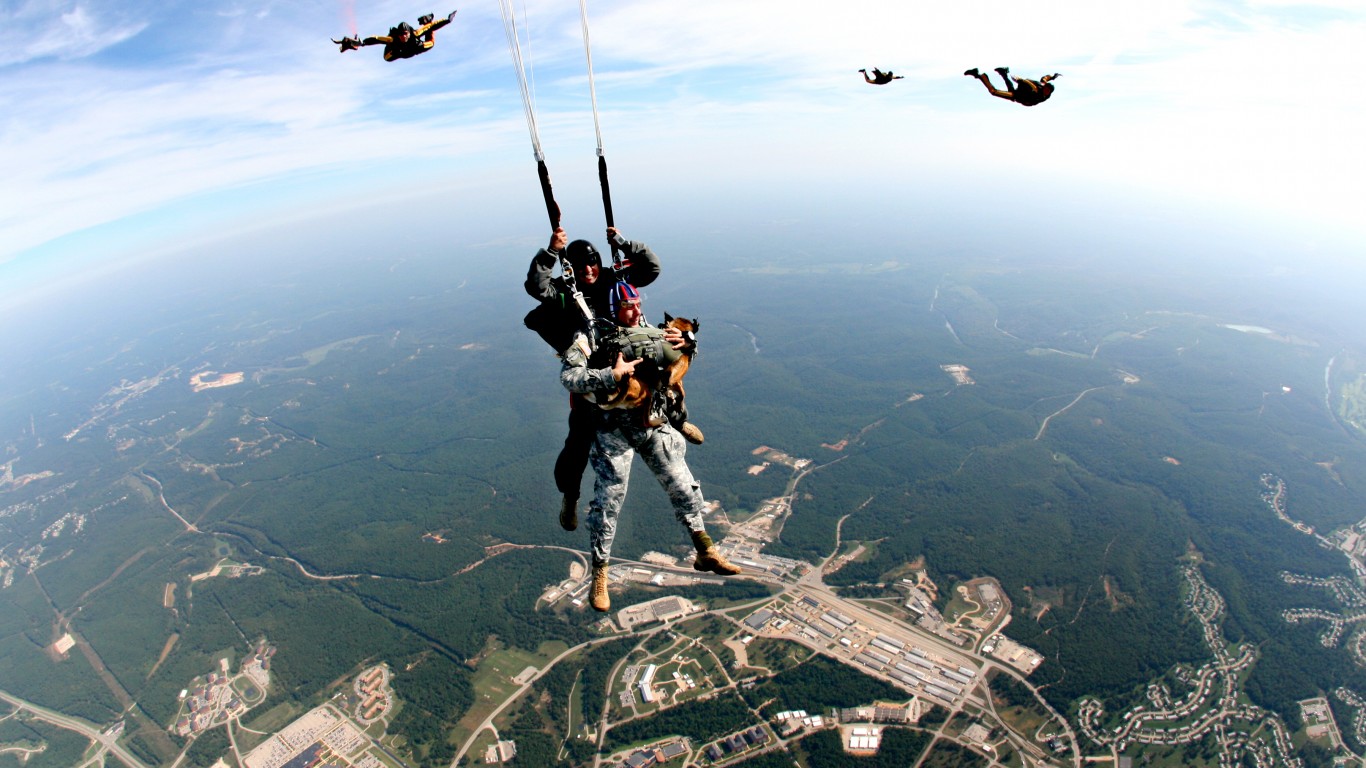
Of all the animals who have jumped from airplanes, dogs are the only ones that continue to drop into active war zones in the modern day. The practice became popular during World War II, and often dropped by themselves. Under the War Dog Program in the United States Army, dogs were trained for sentry, scouting, mine detection, sending messages, and pulling sleds. By the end of World War II, the Army had over 20,000 dogs in the program, but only around half ever completed their training.
Today, a dog will typically drop from a plane attached by a line or a harness to a soldier. The soldier will form part of a canine unit that always brings the animals into a war zone. Their equipment is specially designed to keep the dog safe while allowing it to move freely and easily once it reaches the ground. Recently, a new harness was developed that keeps the dog safe and secure during a jump and landing, keeping its legs tucked in the pod-like harness so they don’t break when they land. After a successful landing, the pod opens up like a flower allowing the dog to begin its job.
Of course, you can’t just throw any old dog out of an airplane with a parachute and expect things to work out. Parachuting dogs are trained intensively to make sure they stay calm and alert during their jump. They build trust with their handler and treat their jumps like a job.
2. Pigeons
It might sound strange that pigeons have ever needed to use a parachute, they can fly after all. But fighter pilots began packing caged pigeons with them soon after airplanes entered the war scene. They did this for one reason: when they were shot down, the pilots needed a safe and reliable way to communicate to their leaders where they were so they could be rescued.
Specifically, they would load a homing pigeon trained to return to their airfield into a cage and carry it with them in their cockpit. If they were hit, they would grab the cage, attach it to their suit, and leap to safety. This was a common and essential practice during World War I and continued into World War II.
During World War II, homing pigeons began to be airdropped into war zones by themselves. They were typically dropped over areas where resistance fighters were located so they could have a way to communicate their work back to Allied forces. Also, they were dropped along with paratroopers just in case their radios didn’t work. For example, 82 pigeons were dropped along with the First Airborne Division Signals in Operation Market garden. When they were sent back with a message, they had to fly 240 miles back to London to deliver it.
The practice of airdropping pigeons, or carrying one on every fighter plane, was discontinued after technology advanced and became more reliable.
3. Turkeys
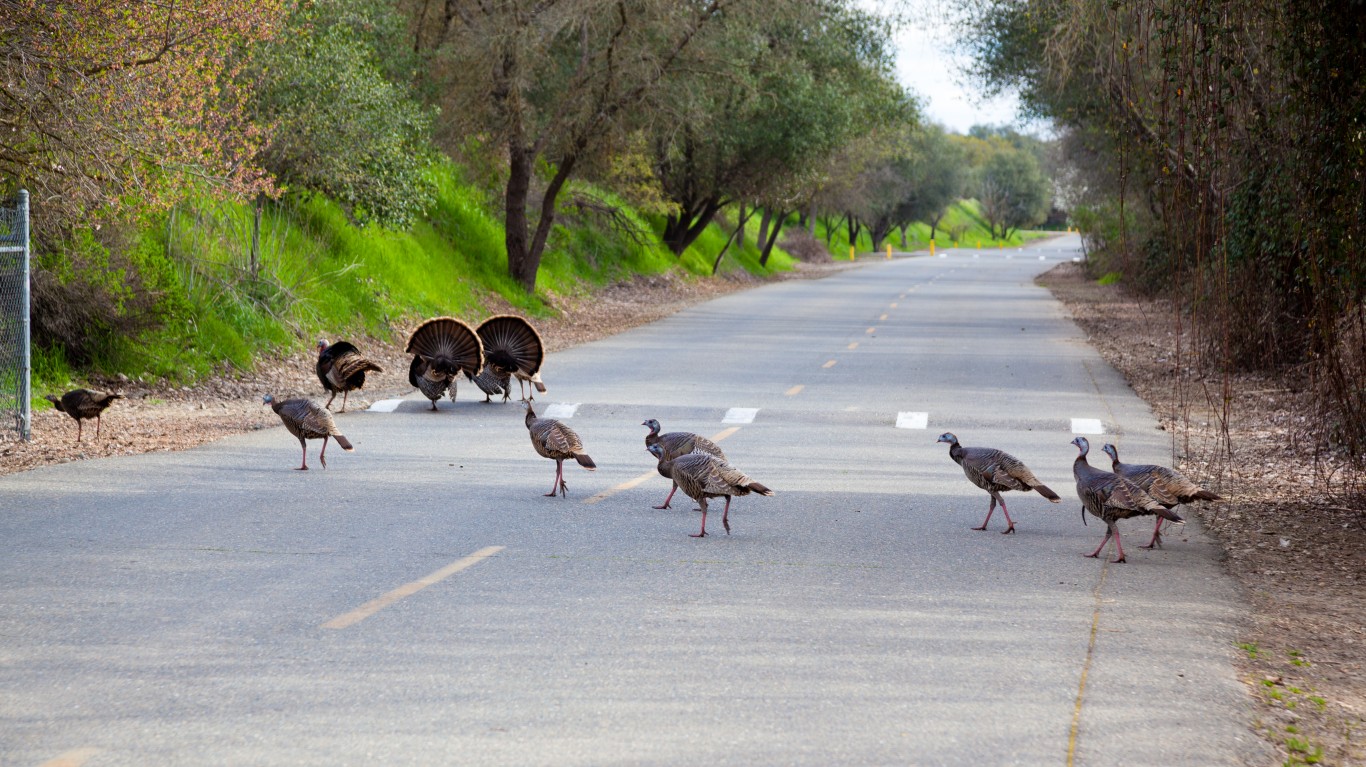
We’ve included animals that have dropped with parachutes, but what about animals that became parachutes?
During the Spanish Civil War, after the failed Nationalist coup of July 1936, Republican forces surrounded about 1,200 Nationalist rebel forces inside a monastery named Santuario de Nuestra Señora de la Cabeza. The sieve lasted from September 14, 1936, to May 1, 1937. The forces at the monastery were the last group of rebels to be eliminated by the Republican forces.
During the siege, Nationalist forces tried to help and support their comrades besieged in the monastery, but there was no way to get troops there, nowhere to land planes, and they had no parachutes to drop supplies.
Desperate to help their comrades, Nationalist forces came up with a brilliant idea: use turkeys as parachutes. Turkeys can’t fly, but when they (somehow) find themselves airborne, they will flap their wings frantically in order to slow and direct their descent. The rebel forces attached medical supplies and delicate goods to live turkeys that were thrown from airplanes over the monastery. Predictably, the turkeys flapped their wings in a panic, slowing their descent, and delivering the fragile supplies to the ground safely.
An added bonus to using turkeys as replacement parachutes? The turkeys could be eaten by the soldiers as soon as they landed, giving them a fresh source of meat that they desperately needed.
4. Elephant

There is only one instance of an elephant making the daring drop by parachute, and it occurred in Vietnam during the misguided Vietnam War. While most of us know this event by the name popularized by the movie Operation Dumbo Drop, it was actually called Operation Barroom after the sound made by an elephant farting.
During the war, the Green Berets used expensive wood imported from the United States to build training camps for Vietnamese villagers to learn to fight. They had to find an easier and cheaper way, and one solution was to teach the villages to produce their own useable lumber with a new mill (mahogany, in this case). The Vietnamese villagers learned quickly, but the problem was that they needed a reliable way to get the logs to the mill before they could be turned into boards.
The rough Vietnamese terrain destroyed tires, axles, and every vehicle that tried to haul the logs and lumber back and forth. The villagers suggested elephants, which they had used a long time ago.
After a long process of bartering and trading with nearby villages, Captain Gantt, who was in charge of the operation, managed to secure two Indian elephants. Now, he had to figure out how to get them to the village. They couldn’t walk them 300 miles through the jungle, and they couldn’t go by boat since elephants get seasick, so the only option was to drop them.
The Air Force, however, wasn’t about to take a live elephant on an airplane unless it was tranquilized. So, Gantt had to call experts in America to figure out how to put his elephants to sleep. After 12 hours on the phone, and six weeks securing the tranquilizer, the elephants were ready to go.
The two elephants finally made their jumps on April 4, 1968. They landed safely among thousands of local Montagnards and press from all over the world, including all three of the biggest TV networks in America.
5. Sheep and Bulls
Sheep don’t usually make the list when it comes to useful wartime animals. They’re not known for their vicious nature or ability to carry soldiers into battle. Yet this didn’t stop the Italians from dropping them into a warzone.
Italy was the first country to implement the concept of a “flying supply column” which involved dropping ammo, food, water, and other supplies that ground-based forces needed as they advanced through a warzone. At the time, Italy was engaged in the Second Italo-Ethiopian War and a large number of Italian soldiers were trying to cross the Danakil Desert in Abyssinia (modern-day Ethiopia). The Danakil Desert is one of the most dangerous and inhospitable areas on Earth and was extremely difficult for military forces to cross, let alone get supplies to them.
Instead of forcing the soldiers to carry extra supplies, the Italian military decided to airdrop the water, materials, and supplies they would need to make the difficult crossing. Among these supplies were live sheep and bulls.
We don’t know why they decided to drop live animals instead of butchering them beforehand and simply dropping the prepared meat. Perhaps it was to help improve morale by giving soldiers something fresh to eat instead of military rations (they were Italian, after all).
By the end of the crossing, Italy had dropped 72 live sheep and two living bulls, all of which landed without injury.
6. Honorable Mention: Bats
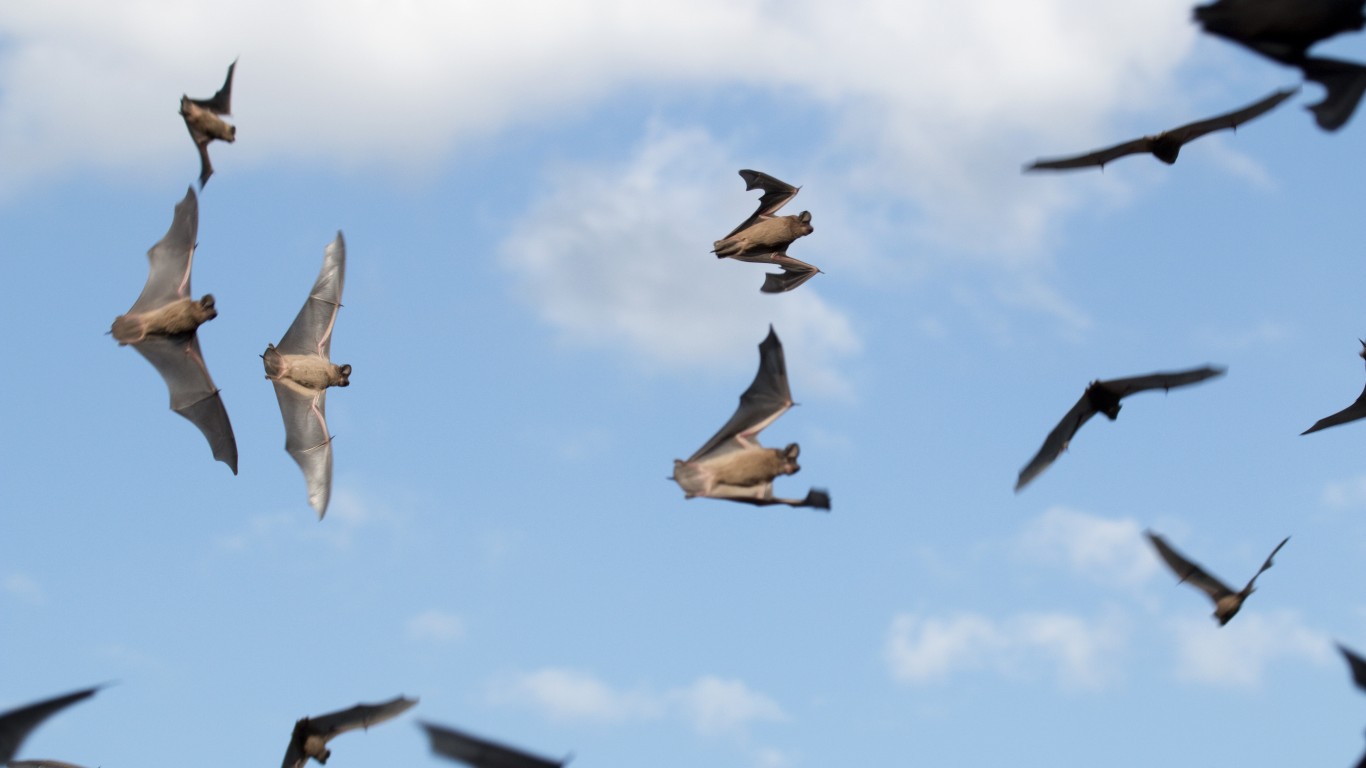
A device known as the “Bat Bomb”, was under development during World War II but was never actually deployed against enemy forces. It was known as Project X-Ray.
The device involved a large bomb-shaped canister with a thousand individual compartments inside. Mexican free-tailed bats would be contained in the compartments with small incendiary bombs attached to them. The bombs included a timed fuse.
The bomb would be dropped during the morning hours at a high altitude with a parachute. When it approached the ground, it would open mid-flight and release a thousand bats into the air above the target. The bats would seek out places to hide during the day including attics, tunnels, and other dark places. After a set time, the bombs would detonate, setting fire to whatever building the bat was attached to.
It was planned to be particularly effective against Japanese cities where many buildings were constructed out of paper and wood. In fact, it was estimated to be many times more effective than the incendiary bombs that were being used at the time. Successful tests were conducted but Project X-Ray was never used against the Japanese. The funding was diverted, instead, to the Manhattan Project.
Get Ready To Retire (Sponsored)
Start by taking a quick retirement quiz from SmartAsset that will match you with up to 3 financial advisors that serve your area and beyond in 5 minutes, or less.
Each advisor has been vetted by SmartAsset and is held to a fiduciary standard to act in your best interests.
Here’s how it works:
1. Answer SmartAsset advisor match quiz
2. Review your pre-screened matches at your leisure. Check out the advisors’ profiles.
3. Speak with advisors at no cost to you. Have an introductory call on the phone or introduction in person and choose whom to work with in the future
Get started right here.
Thank you for reading! Have some feedback for us?
Contact the 24/7 Wall St. editorial team.
